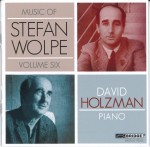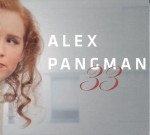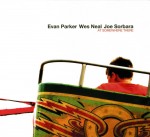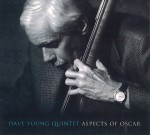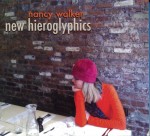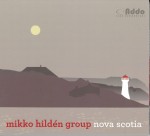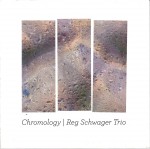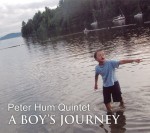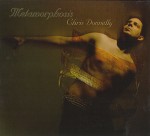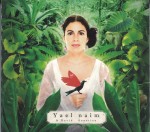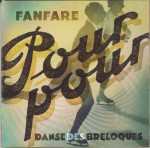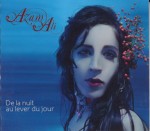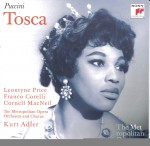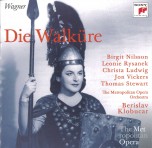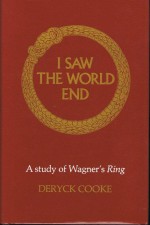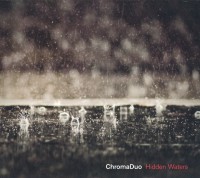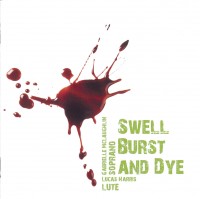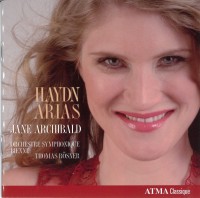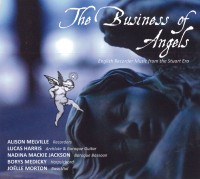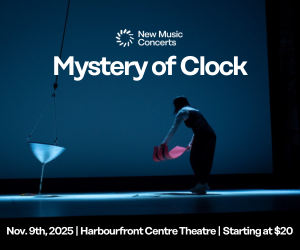More than 60 years after the big band era, improvising musicians still organize large ensembles to take advantage of its wider scope and range of colors. Such is the versatility of the arrangements possible with large bands as these sessions demonstrate, that each sounds completely unique while maintaining the same excellence.
 Over nearly 71 minutes on Totally Gone (Rai Trade RTP J0021 www.italianinstabileorchestra.com), the all-star aggregation of 17 of the country’s most accomplished players who make up the Italian Instabile Orchestra (IIO) demonstrate the combination of technical skills and rambunctious good spirits that has kept the band going since 1990. Unsurprisingly the climatic track, Ciao Baby, I’m Totally Gone/It Had to be You, is a case-in-point instance of the band’s expansive talents. Switching between timbral dissonance from squeaky spiccato strings and snoring brass slurs on one hand with sibilant, staccato section work that could have migrated from Fletcher Henderson’s band, the IIO’s texture is simultaneously mainstream and avant-garde. This is made clearest when a sequence of pure air forced from Sebi Tramontana’s trombone turns to plunger polyrhythm as he’s backed by harmonized reeds and strings, and ends with him vocalizing the second half of the title backed by Fabrizio Puglisi’s key-clipping piano and Gianluigi Trovesi’s undulating clarinet obbligato. This sense of fun is also expressed on No Visa, a jazzy hoedown which leaves room for sul ponticello fiddling from violinist Emanuele Parrini, funky tenor saxophone vamping from Daniele Cavallanti, a brassy mid-range fanfare and the entire band vocally riffing in unison. This doesn’t mean that compositional seriousness isn’t displayed alongside the theatricism. The multi-tempo Gargantella, for instance is as much a nocturne as a capriccio. Here closely-voiced and massed horns and strings move adagio beneath strained brass notes and a snorting, altissimo showcase for baritone saxophonist Carlo Actis Dato until the tone poem is completed by polished, string movements given shape by the clattering cymbals and wood block pops of percussionists Vincenzo Mazzone and Tiziano Tononi.
Over nearly 71 minutes on Totally Gone (Rai Trade RTP J0021 www.italianinstabileorchestra.com), the all-star aggregation of 17 of the country’s most accomplished players who make up the Italian Instabile Orchestra (IIO) demonstrate the combination of technical skills and rambunctious good spirits that has kept the band going since 1990. Unsurprisingly the climatic track, Ciao Baby, I’m Totally Gone/It Had to be You, is a case-in-point instance of the band’s expansive talents. Switching between timbral dissonance from squeaky spiccato strings and snoring brass slurs on one hand with sibilant, staccato section work that could have migrated from Fletcher Henderson’s band, the IIO’s texture is simultaneously mainstream and avant-garde. This is made clearest when a sequence of pure air forced from Sebi Tramontana’s trombone turns to plunger polyrhythm as he’s backed by harmonized reeds and strings, and ends with him vocalizing the second half of the title backed by Fabrizio Puglisi’s key-clipping piano and Gianluigi Trovesi’s undulating clarinet obbligato. This sense of fun is also expressed on No Visa, a jazzy hoedown which leaves room for sul ponticello fiddling from violinist Emanuele Parrini, funky tenor saxophone vamping from Daniele Cavallanti, a brassy mid-range fanfare and the entire band vocally riffing in unison. This doesn’t mean that compositional seriousness isn’t displayed alongside the theatricism. The multi-tempo Gargantella, for instance is as much a nocturne as a capriccio. Here closely-voiced and massed horns and strings move adagio beneath strained brass notes and a snorting, altissimo showcase for baritone saxophonist Carlo Actis Dato until the tone poem is completed by polished, string movements given shape by the clattering cymbals and wood block pops of percussionists Vincenzo Mazzone and Tiziano Tononi.
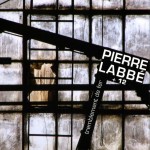 With rock-influenced electric piano and guitar prominent, Pierre Labbé’s 12-piece big band takes a different approach on Tremblement de fer (Ambiances Magnétiques AM 202 CD www.actuellecd.com), performing a seven-part suite the saxophonist composed for a Montreal festival. A POMO sound essay, the composition is animated by contrapuntal clashes between sections which include four bowed strings, two brass, two reeds, plus guitar, piano, bass and percussion. Although linked, each track can be appreciated on its own. Despite its Arabic title, Le 2e Souk is actually a showcase for Jean Derome’s improvisations on successively, alto saxophone, flute and bass clarinet. Throughout his staccato peeps, sibilant slurs and flutter tonguing are matched by tremolo slides, sawing and scratches from the violinists, violist and cellist. Lavra, on the other hand masses Balkan-sounding string discord with irregular pulses from guitarist Bernard Falaise and drummer Pierre Tanguay as soprano saxophonist André Leroux carries the melody. Resolution comes when trombonist Jean-Nicolas Trottier abandons plunger tones to slurp his way up the scale, accompanied by the strings and pianist Guillaume Dostaler’s steady comping. Tanguay, whose hand taps are suitably exotic when playing darbuka, contributes muscular ruffs throughout. His steadying backbeat is particularly necessary on the final La Fille et la grenouille. Sounding like what would happen if a street-corner Sally Ann band wandered into a country music session, the tune mixes up the bugling from the brass players, rooster crows and spits from the reeds, a bow-legged rhythm with cow-bell pings from Tanguay, and Falaise contrasting his best pseudo-steel-guitar C&W twangs with the somewhat schmaltzy tutti horn lines.
With rock-influenced electric piano and guitar prominent, Pierre Labbé’s 12-piece big band takes a different approach on Tremblement de fer (Ambiances Magnétiques AM 202 CD www.actuellecd.com), performing a seven-part suite the saxophonist composed for a Montreal festival. A POMO sound essay, the composition is animated by contrapuntal clashes between sections which include four bowed strings, two brass, two reeds, plus guitar, piano, bass and percussion. Although linked, each track can be appreciated on its own. Despite its Arabic title, Le 2e Souk is actually a showcase for Jean Derome’s improvisations on successively, alto saxophone, flute and bass clarinet. Throughout his staccato peeps, sibilant slurs and flutter tonguing are matched by tremolo slides, sawing and scratches from the violinists, violist and cellist. Lavra, on the other hand masses Balkan-sounding string discord with irregular pulses from guitarist Bernard Falaise and drummer Pierre Tanguay as soprano saxophonist André Leroux carries the melody. Resolution comes when trombonist Jean-Nicolas Trottier abandons plunger tones to slurp his way up the scale, accompanied by the strings and pianist Guillaume Dostaler’s steady comping. Tanguay, whose hand taps are suitably exotic when playing darbuka, contributes muscular ruffs throughout. His steadying backbeat is particularly necessary on the final La Fille et la grenouille. Sounding like what would happen if a street-corner Sally Ann band wandered into a country music session, the tune mixes up the bugling from the brass players, rooster crows and spits from the reeds, a bow-legged rhythm with cow-bell pings from Tanguay, and Falaise contrasting his best pseudo-steel-guitar C&W twangs with the somewhat schmaltzy tutti horn lines.
 Taking a different tack is percussionist Pierre Favre’s Le Voyage (Intakt CD 186 www.intaktrec.ch), which mutates standard big-band harmonies with unique sound blocks in the drummer’s compositions. Utilizing a saxophone choir of soprano, alto, tenor and baritone to create concentrated organ-like chord pulsations, Favre’s intermezzos parcel the solos out among guitarist Phillipp Schaufelberger, trombonist Samuel Blaser and clarinettist Claudio Putin. With the rhythmic thrust doubled by string bass and bass guitar, the results evoke baroque ballads as certainly as big band swing. An example of the latter is Wrong Name where Putin’s florid twitters trill chromatically, while around him harmonized reeds throb in unison, prodded from adagio to andante tempo by cross-patterning cracks and pops from the drummer. Les Vilains on the other hand could be modernized Renaissance court music, with the reeds playing formalized close harmonies as if they were a string quartet, with cascading and irregular timbres doled out from Schaufelberger’s harsh, slurred fingering. Favre’s sound architecture is most obvious on Akimbo where reed shading becomes sonically three-dimensional as the drummer’s clips emphasize the symmetry between the guitarist’s string snaps plus Blaser’s plunger grace notes.
Taking a different tack is percussionist Pierre Favre’s Le Voyage (Intakt CD 186 www.intaktrec.ch), which mutates standard big-band harmonies with unique sound blocks in the drummer’s compositions. Utilizing a saxophone choir of soprano, alto, tenor and baritone to create concentrated organ-like chord pulsations, Favre’s intermezzos parcel the solos out among guitarist Phillipp Schaufelberger, trombonist Samuel Blaser and clarinettist Claudio Putin. With the rhythmic thrust doubled by string bass and bass guitar, the results evoke baroque ballads as certainly as big band swing. An example of the latter is Wrong Name where Putin’s florid twitters trill chromatically, while around him harmonized reeds throb in unison, prodded from adagio to andante tempo by cross-patterning cracks and pops from the drummer. Les Vilains on the other hand could be modernized Renaissance court music, with the reeds playing formalized close harmonies as if they were a string quartet, with cascading and irregular timbres doled out from Schaufelberger’s harsh, slurred fingering. Favre’s sound architecture is most obvious on Akimbo where reed shading becomes sonically three-dimensional as the drummer’s clips emphasize the symmetry between the guitarist’s string snaps plus Blaser’s plunger grace notes.
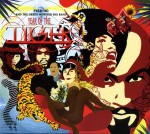 Practically standing the big band tradition and its head, American gigantism is emphasized on Fred Ho and the Green Monster Big Band’s Year of the Tiger (Innova 789 www.innova.mu) since the Chinese-American composer bursts with so many sociological and musical tropes that a 21 musicians are needed to express them. A Marxist populist Ho packs within 70 minutes, a five-part suite honouring African-American big bands; a trio of Michael Jackson songs; the Johnny Quest TV show theme song; a couple of Jimi Hendrix hits; plus excerpts from his chamber opera featuring the band plus an adult and a children’s choirs. These extracts are notable for how he blends formalist bel canto singing with instrumental looseness from an improvising ensemble, whereas Ho’s arrangement of the Hendrix melodies play up their jazz-rock linkage as tremolo trombone slurs and roistering sax vamps parallel the double-tracked vocals. More seriously, adding an anti-capitalist recitation from poet Magdalena Gomez to Jackson’s Bad and Thriller, already evocatively sung by Leena Conquest, defines the werewolf and zombie sound effects within the context of mindless consumerism, mocked by guffawing brass and a slurping tenor sax solo. The CD’s heart is contained in the six selections of Take the Zen Train, which manages to reference both Pete Seeger and Duke Ellington. Using instrumental pulsations and layering, with bellowing brass reverb and tension-and-release variants plus the vibrancy of frequent tempo changes, Ho composes tonal portraits for his soloists. Outstanding are cornetist Taylor Ho Bynum’s whispering and peeping ballad feature; the stop-time slurs and gutbucket expansions from bass trombonist David Harris; plus an interlude which matches alto saxophonist Jim Hobbs’ reed masticating alongside the composer’s snorting baritone sax runs. Seeger’s left-wing orientation is apparent in some of the tune titles including Quarantine for the Aggressor. Whether used for program music or for timbral amplification, big bands remain a preferred form of expression for players and composers.
Practically standing the big band tradition and its head, American gigantism is emphasized on Fred Ho and the Green Monster Big Band’s Year of the Tiger (Innova 789 www.innova.mu) since the Chinese-American composer bursts with so many sociological and musical tropes that a 21 musicians are needed to express them. A Marxist populist Ho packs within 70 minutes, a five-part suite honouring African-American big bands; a trio of Michael Jackson songs; the Johnny Quest TV show theme song; a couple of Jimi Hendrix hits; plus excerpts from his chamber opera featuring the band plus an adult and a children’s choirs. These extracts are notable for how he blends formalist bel canto singing with instrumental looseness from an improvising ensemble, whereas Ho’s arrangement of the Hendrix melodies play up their jazz-rock linkage as tremolo trombone slurs and roistering sax vamps parallel the double-tracked vocals. More seriously, adding an anti-capitalist recitation from poet Magdalena Gomez to Jackson’s Bad and Thriller, already evocatively sung by Leena Conquest, defines the werewolf and zombie sound effects within the context of mindless consumerism, mocked by guffawing brass and a slurping tenor sax solo. The CD’s heart is contained in the six selections of Take the Zen Train, which manages to reference both Pete Seeger and Duke Ellington. Using instrumental pulsations and layering, with bellowing brass reverb and tension-and-release variants plus the vibrancy of frequent tempo changes, Ho composes tonal portraits for his soloists. Outstanding are cornetist Taylor Ho Bynum’s whispering and peeping ballad feature; the stop-time slurs and gutbucket expansions from bass trombonist David Harris; plus an interlude which matches alto saxophonist Jim Hobbs’ reed masticating alongside the composer’s snorting baritone sax runs. Seeger’s left-wing orientation is apparent in some of the tune titles including Quarantine for the Aggressor. Whether used for program music or for timbral amplification, big bands remain a preferred form of expression for players and composers.


